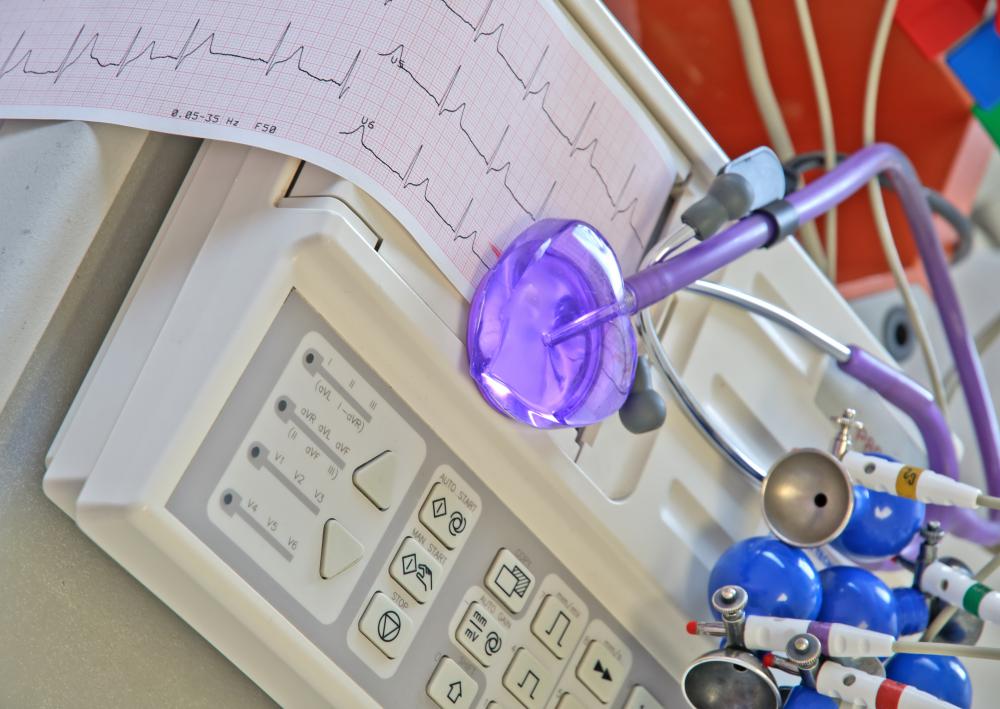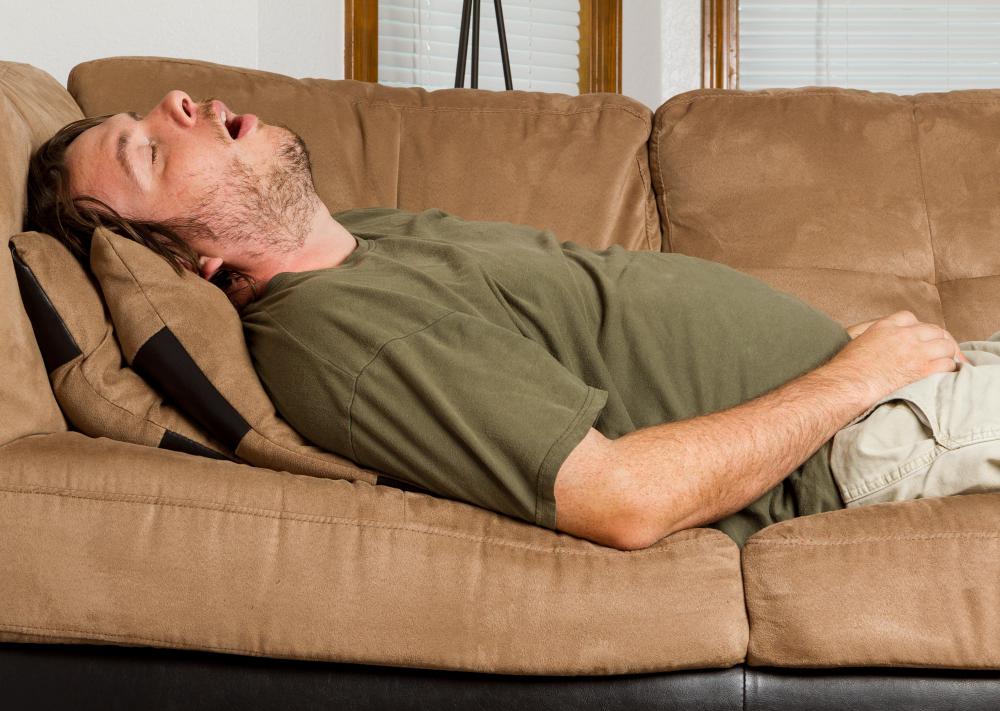At WiseGEEK, we're committed to delivering accurate, trustworthy information. Our expert-authored content is rigorously fact-checked and sourced from credible authorities. Discover how we uphold the highest standards in providing you with reliable knowledge.
What Is Symptomatic Bradycardia?
Symptomatic bradycardia is a condition characterized by an abnormally low heart rate accompanied by symptoms like dizziness and fatigue. For many patients, this occurs when the resting heart rate drops below 50 beats per minute, although there are some exceptions. People with symptoms related to a low heart rate may need treatment because they could develop complications, including a myocardial infarction, where the heart doesn’t get enough oxygen and some of the muscle tissue is damaged. Treatment options can depend on the underlying causes.
Healthy adults may have a heart rate between 60 and 100 beats per minute. If this drops below 60 beats per minute, it may be classified as bradycardia. In athletes, the resting heart rate is often lower, and rates as low as 40 are not necessarily a cause for concern if the patient is clearly healthy. Some people have a naturally higher rate because of specific medical conditions, and may have what is known as relative bradycardia. In these cases, a patient may have a resting heart rate above 60, but with symptomatic bradycardia, indicating their hearts are not beating enough to supply their oxygen needs.

Recommendations for resting heart rate and target heart rate for exercise depend on a patient’s age and physical condition. The goal is to avoid bradycardia, where the body doesn’t get enough oxygen, as well as tachycardia, where the heart beats too fast and is excessively strained. People preparing for exercise regimens may discuss their heart health to determine if they need to take any protective measures like slowly increasing the intensity of conditioning to accustom to the heart to the increased workload.

Patients with cases of symptomatic bradycardia experience symptoms because the circulation of oxygen in the body is inadequate. Dizziness, fainting, and instability can occur because the brain isn’t getting enough oxygen, and many patients experience fatigue as well. If the oxygen shortage is prolonged, the patient can develop symptoms like bluing around the fingers and toes. The risk of myocardial infarction is also increased in patients with symptomatic bradycardia.

When a doctor identifies a low heart rate and symptoms, an electrocardiogram test may be requested. This provides a readout on electrical activity inside the heart, which can help the medical professional determine the origins of the abnormal heart rhythm. Some treatment options for symptomatic bradycardia can range from medications to control the heart rate to a mechanical pacemaker that will control the heart rhythm if the heart is no longer able to do so on its own. The best option can depend on the cause, the patient’s general level of health, and the preference of the care provider.
AS FEATURED ON:
AS FEATURED ON:















Discuss this Article
Post your comments